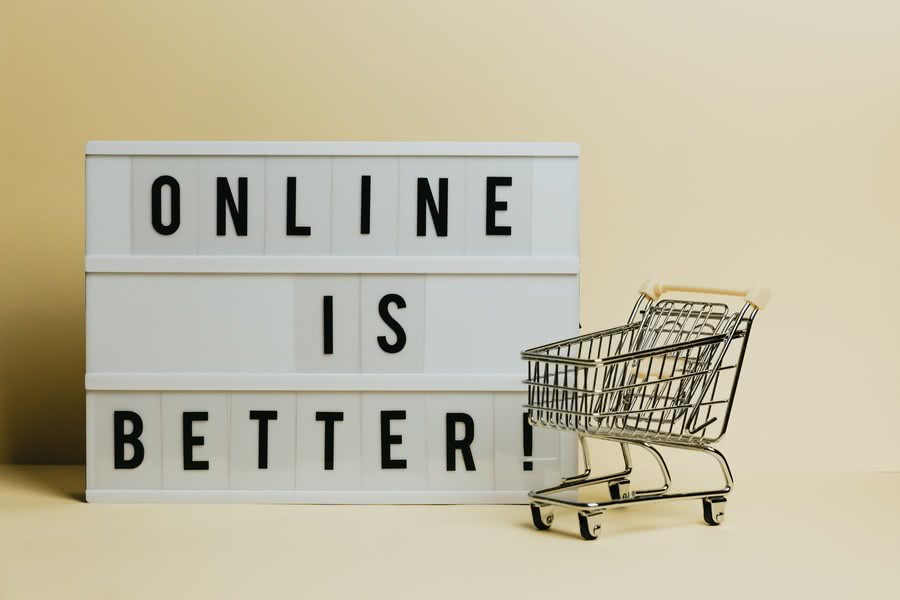Omnichannel: definition
#The rise of omnichannel shopping
With the development of digital, shoppers now use up to 7 different shopping channels1 (websites, marketplaces, mobile apps…) before making their purchase and to spend time researching a product:
- Gather information
- Evaluate
- Compare prices
- Check customer reviews
- Compare products from several different brands
This change in shopping behavior makes it necessary for businesses to use an omnichannel approach. This is the best way to meet the expectations of today's shoppers and to provide them with a global, consistent, and undisrupted experience.
A PIM (Product Information Management) solution is a powerful ally in its implementation.
#The difference between multichannel, cross channel and omnichannel
 #
#Multichannel
Multichannel involves deploying several different selling channels to reach the widest possible audience. Each selling channel targets a specific customer segment and operates independently: teams, budgets, tools…
By setting selling channels up against each other, multichannel selling does not fully satisfy the expectations of today's shoppers who are hyperconnected and often use several different shopping channels simultaneously with 82% of them2 checking their smartphones while in the store.
#Cross channel
Rather than pitting each selling channel against the others, cross channel utilizes their complementarity. Using the strengths and specifics of each channel (mobile apps, marketplaces, physical stores…), this approach optimizes the shopping experience.
With cross channel, shoppers can easily switch from one shopping channel to another. In 2019, 83% of shoppers3 bought a product online and then picked it up instore.
#Omnichannel
Omnichannel is a development of multichannel and cross channel which goes further than simply multiplying and/or interconnecting shopping channels.
It involves putting the shoppers' needs at the heart of the customer journey and creating real synergy between all shopping channels to give them the best possible experience.
#Why should you develop an omnichannel strategy?
The Covid-19 crisis had a huge impact on the eCommerce industry. Health restrictions and the tightening of existing rules changed shopping habits: increase in online purchasing, reduction in visits to physical stores, change in shopping preferences (product categories, shopping criteria, interests…).
In response to this, eCommerce businesses developed new omnichannel strategies and online shopping options:
- Click and collect
- Appointments made with a personal shopper through video chat
- Order made through mobile app
- Home delivery
- Live chat, chatbots and virtual assistants
- Virtual consultations
These shopping habits are still around and have become the « new normal ».
#The benefits of omnichannel
#Generate more revenue
Shoppers using several selling channels are more valuable to businesses. They spend more in physical channels (+4%4 in stores) and digital channels (+10%4 online).

This means that business providing a truly omnichannel journey get the best results and generate an increase in annual revenue of 9.5%5, as opposed to just 3.5%5 for businesses that don't.
#Increase customer loyalty
Shoppers using several channels shop more regularly with 23% of them1 returning to the store within six months of their first purchase. They are also more likely to recommend a brand4 to their friends and family.
Businesses providing several different selling channels increase the engagement of customers with their brand. By delivering a truly omnichannel shopping experience, they gain the loyalty of 89% of shoppers1.
#Improve customization
By monitoring shopper interactions 6 across all selling channels (stores, websites, mobile apps…), the business can reconcile offline and online customer data (shopping history, email exchanges, preferred payment methods…) and analyze their profiles in more detail.
Understanding your customers enables you to improve your customization and implement targeted actions: special offers, emailing, development of cross selling and/or up-selling…
#Implement an omnichannel strategy
#The importance of an omnichannel strategy
For a business to be successful it is essential to implement a truly « omnichannel strategy » which involves considering the needs of the shopper at each stage of the shopping journey: consistent information, harmonious shopping journey, unique instore experience...
You must also fully understand the challenges involved in its implementation: varied shopping methods, creating new synergies, innovation… Only 8% of businesses7 feel that they are currently in full control of their omnichannel strategy.
#Provide several shopping methods
#BOPIS
BOPIS (Buy online, Pick-up in-store) as its name suggests involves buying online and choosing where and when to retrieve your order. This is a very popular shopping option with 50% of shoppers3 using it. Some of the reasons3 for its popularity: no delivery fees (35%3), reduced waiting times (35%3), reduced risk of theft (11%3), the possibility to inspect the product while picking it up (10%3)…
From a business point of view, BOPIS also generates instore visits increasing the opportunity for additional sales. 85% of shoppers9 using BOPIS have made an instore purchase while picking up their order.
#Other shopping methods

Businesses providing several shopping methods provide simplicity and practicality for their shoppers and increase their satisfaction. BOPAC (Buy Online, Pickup at Curbside) or Curbside pickup, ROPIS (Reserve Online, Pickup In-store), BORIS (Buy Online, Return In-store), Click and collect… 75% of shoppers3 who have tried these methods intend to continue using them. They also avoid the risks of damage to products3 during delivery: 79% of shoppers3 will not repeat buy from an eCommerce shop after having received a damaged product.
#Guarantee a consistent experience
90% of shoppers10 say that they expect a consistent shopping experience on each shopping channel. For example, if they notice a difference between an offer on the brand's eCommerce website and in the store, they may abandon their purchase, or even switch11 to a competitor brand.
To avoid these situations and to remain competitive, it is important for a company to guarantee the consistency of product information (price, special offers, marketing descriptions…) on each selling channel. They must also ensure that this information is constantly up to date, reliable and validated before distribution to the various distribution channels.
#Which selling channel for your omnichannel strategy?
To ensure the success of your omnichannel strategy, it is important to identify the selling channels that are best suited to and most profitable for your business: 40% of shoppers12 will not buy if they cannot use their preferred shopping channel. Several criteria13 should be considered to make this decision: budget, target audience, product offer, objectives…
Some of the strategic selling channels that you should consider:
#eCommerce websites

Along with physical stores, eCommerce websites represent the channel generating the most sales (73%14). In choosing this channel, businesses are not restricted by the rules of marketplaces and/or online selling platforms. They have more control over the management of the website: orders, SEO, brand image… It is also easier for them to gather customer data and to customize interactions with their audience.
#Marketplaces
Marketplaces are a fantastic business opportunity enabling businesses to reach a wider target: shoppers make 51% of their purchases15 through marketplaces.
However, marketplaces are covered by very specific rules (costs, restrictions, ranking criteria…) and competition is fierce on these selling spaces. This makes it super important to know the pitfalls to avoid on marketplaces and to fully understand how they work before signing up.
#Social commerce
Social networks are a fantastic opportunity for gaining new customers: Facebook, Instagram, and YouTube have 6 million users between them16.
Social commerce involves using these platforms to generate sales: 73% of businesses17 use them with this aim and 79%17 intend to be using this channel within the next three years. To get the most from them, it is important to identify the most relevant social networks (Instagram, Facebook, Snapchat…) and to understand the specifics of each (functionality, targets, trends…).
#Price comparison website
Price comparison websites make it easier to compare several products and provide many benefits18 for sellers: renown, visibility, search engine optimization…
By registering with a price comparison website, sellers can stand out from the competition by providing an offer with an excellent quality-price ratio. They can also display their product on numerous search queries (« best price », « best offer », « buy for less »…) which will improve their visibility on search engines.
#The importance of the instore experience
Physical stores remain an important selling channel and represent an opportunity to create a unique connection with shoppers: 81% of shoppers19 visit stores to discover and/or evaluate new products.

When shoppers buy instore, they now expect to feel unique and to have a shopping experience in line with current shopping trends and the latest technology: interactive terminals, tablets, virtual reality (VA)… To encourage them, brands have to implement concrete strategies (phygitalization, customization, digitalization…) and optimize the instore customer experience.
#Rise to the omnichannel challenges
#The digital transformation: an unavoidable lever for developing an omnichannel approach
For a successful omnichannel strategy, a business must provide shoppers with a seamless shopping experience. This means providing them, at each stage of their shopping journey, with the relevant product information, customized and translated into the right language.
It also requires ensuring the consistency of information on each of the shopping channels that they choose to use. To achieve this, businesses must reconsider the existing process, dismantle online and offline silos and speed up their digital transformation.
#Build a successful omnichannel strategy with PIM
Businesses must assess whether they have the right tools to meet the challenges of omnichannel selling: 45% of businesses7 say that they do not have the right technology and/or feel the need to acquire additional software platforms.
PIM simplifies the preparation and adaptation of product information before distribution. Through its workflow engine, each team can, depending on their user rights, update, inspect and approve product data. PIM guarantees the consistency of product information on each selling channel.
With its connectors, PIM also transmits this data to all distribution channels, and in particular to numerous eCommerce sites and marketplaces: WooCommerce, Shopify, Magento, PrestaShop…
To sum up, omnichannel is THE means of providing the best response to shopper demands across the shopping journey. To develop this approach, it is essential to keep up to date on new shopping habits and to implement a truly omnichannel strategy, which involves boosting your digital transformation and acquiring an appropriate solution such as PIM.
1
Lockhart, J. W. L., & Cummings, A. R. C. (2022, June 16). Omnichannel Marketing Guide : Everything You Need to Know to Get Started. shopify.com.
2
Ellett, J. E. (2018, February 8). New Research Shows Growing Impact Of Online Research On In-Store Purchases. forbes.com.
3
Damen, A. D. (2022, February 16). What is Buy Online, Pick-Up In Store (BOPIS) in Retail ? (2022). shopify.com.
4
Harvard Business Review. (2017, January 3). A Study of 46,000 Shoppers Shows That Omnichannel Retailing Works.
5
Sharma, T. S. (2020, June 12). Key Omnichannel Retail Trends To Look For In 2020. customerthink.com.
6
Oracle. What is omnichannel? oracle.com.
7
Study : 87% of Retailers Agree Omnichannel is Critical to their Business, Yet Only 8% Have « Mastered » it. (2017, December 13). prnewswire.com.
8
Ketzenberg, M. K., & Akturk, S. A. (2021, May 25). How “Buy Online, Pick Up In-Store” Gives Retailers an Edge. hbr.org.
9
Damen, A. D. (2021, May 13). The Ultimate Guide to Curbside Pickup (With Examples of Local Retailers Doing it Right). shopify.com.
10
Khorana, V. K. (2021, November 4). Modern Customers Expect An Omnichannel Experience, And Marketers Need To Rise To The Occasion. forbes.com.
11
Chemouny, E. C. Etes vous prêt à faire du commerce cross canal ? journaldunet.com.
12
O'connell, M. O. (2022, January 31). How an Omnichannel Strategy Benefits Businesses and Customers. salesforce.com.
13
Mur, S. M. (2022, February 14). Quels sont les différents canaux de vente et lesquels choisir ? appvizer.fr.
14
pwc. 10 retailer investments for an uncertain future.
15
Henault, J. H. (2021, April 9). 50 faits incontournables pour une stratégie E-commerce en 2020. semrush.com.
16
Vialenc, J. V. [Social commerce] Définition, avantages et inconvénients et comment mettre en place cette stratégie dans votre e-commerce. doofinder.com.
17
Gomez, R. G. (2021, May 4). What is social commerce ? The stats, examples and tips you need for 2021. sproutsocial.com.
18
Leuenberger, M. L. (2022, March 14). Canaux de vente : Exemples et comment choisir. shopify.com.
19
Dunkel, B. D. (2019, May 6). Expérience en magasin : quelles attentes concrètes des consommateurs ? journaldunet.com.






